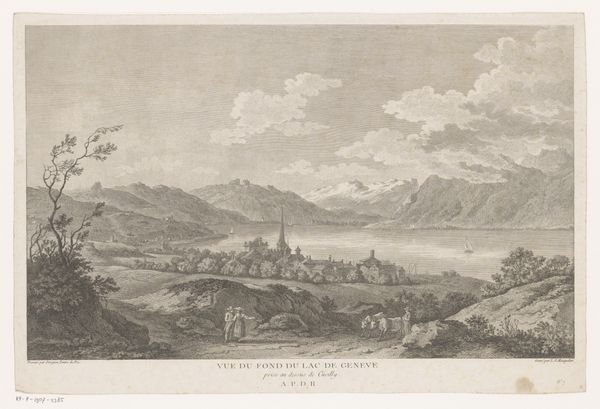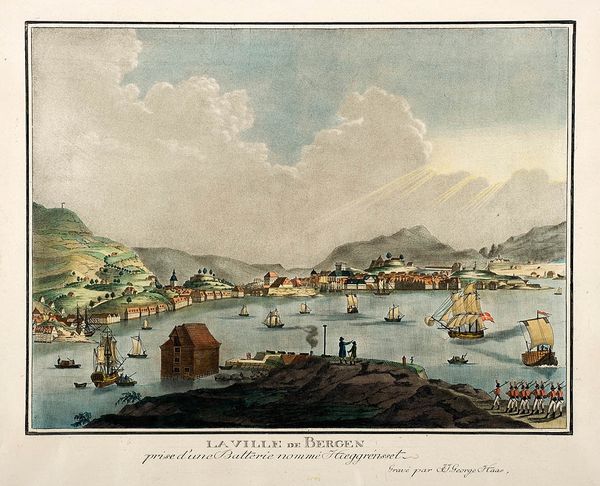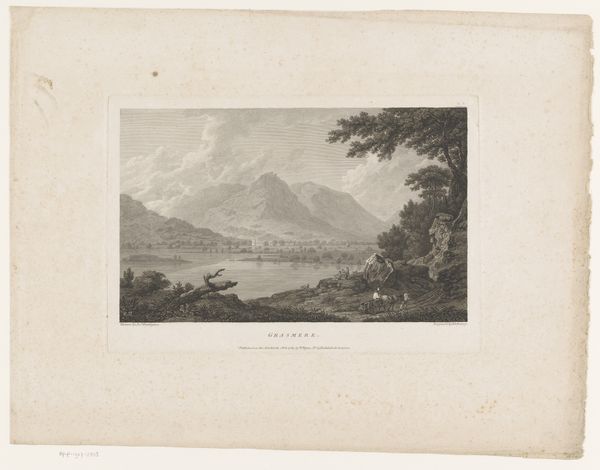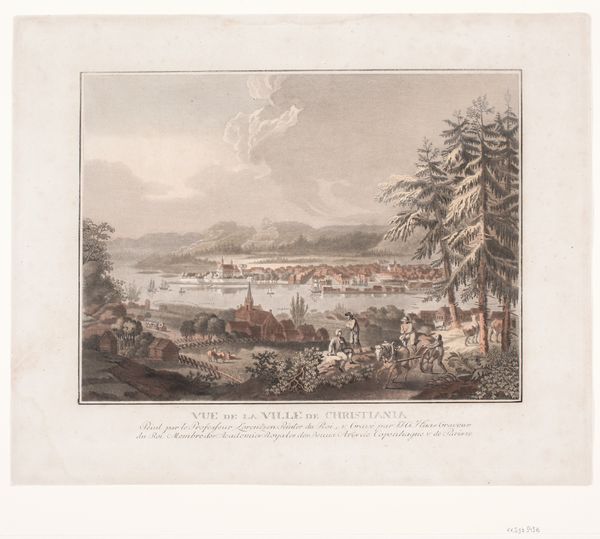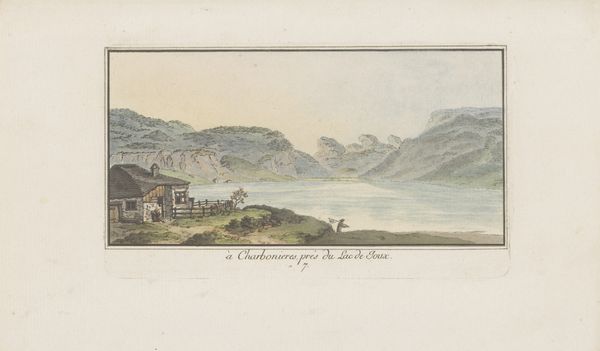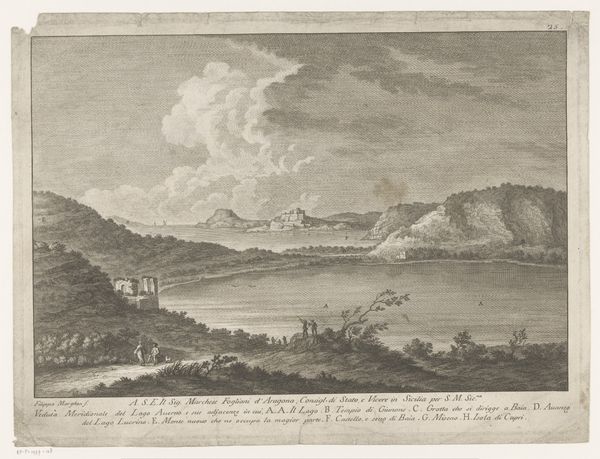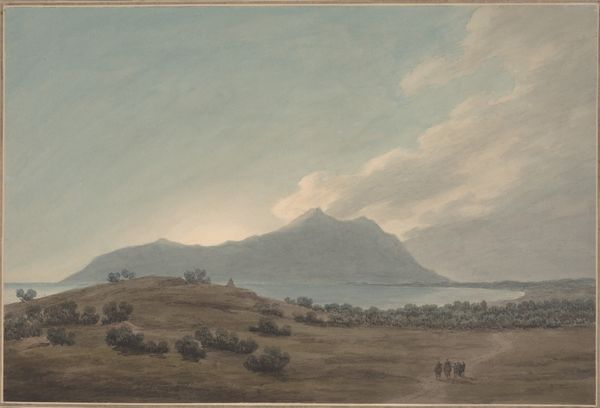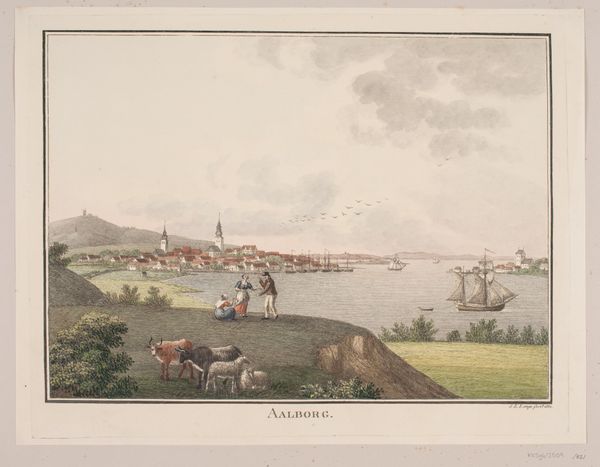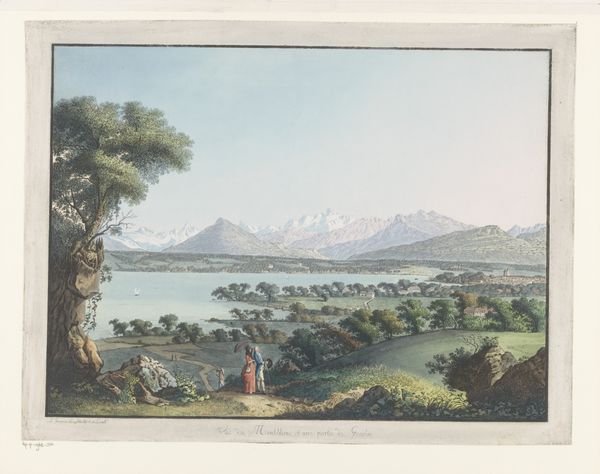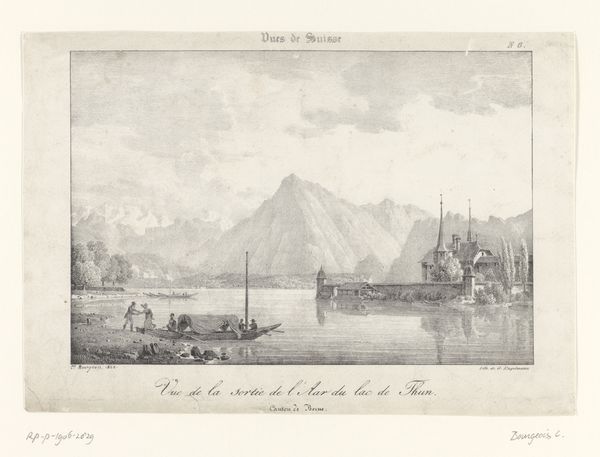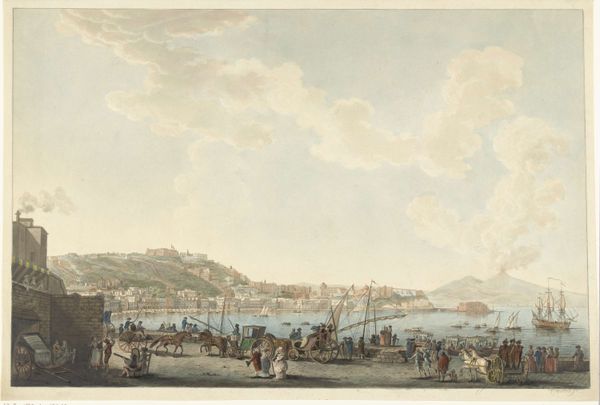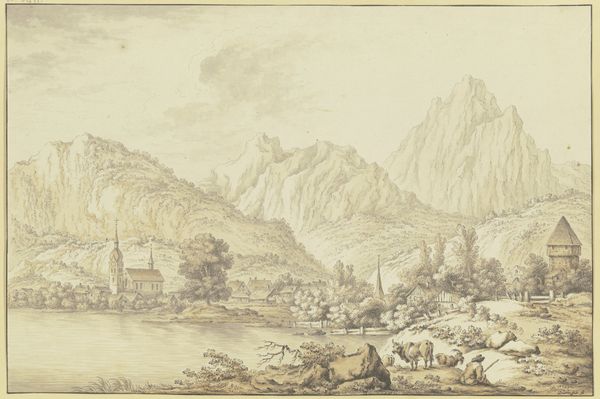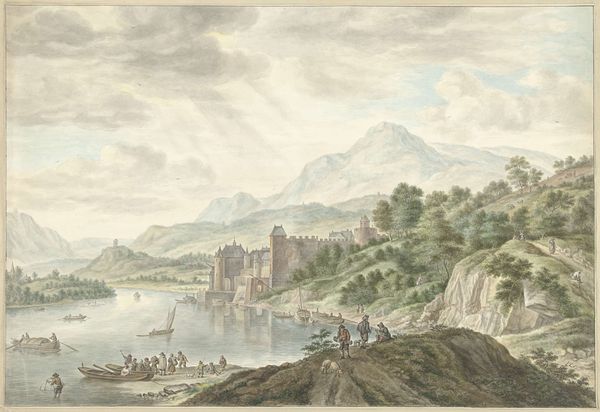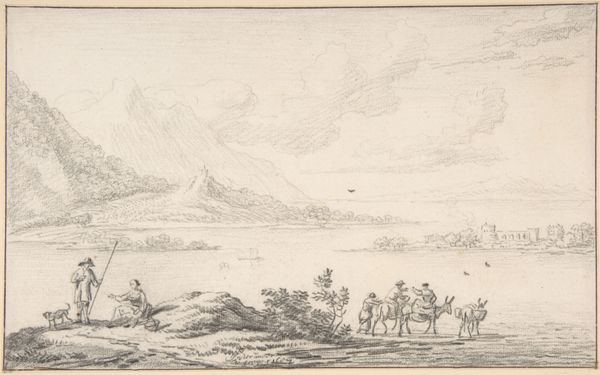
drawing, painting, print, paper, watercolor
#
drawing
#
painting
# print
#
landscape
#
paper
#
watercolor
#
cityscape
Dimensions: 240 × 390 mm (image); 330 × 480 mm (sheet)
Copyright: Public Domain
Editor: So, here we have "Vue de Schadau sur le Lac de Thun" by Charles Melchior Descourtis. It seems to be a watercolor painting or print on paper depicting a cityscape and landscape. I'm struck by how serene and almost idyllic the scene is. The soft colors and meticulous details create a real sense of tranquility. How do you interpret this work? Curator: It’s interesting to consider this "Vue" in its historical context. During this period, views like these were commissioned and circulated not just as artistic expressions, but as powerful tools shaping perception of place, power, and status. The dedication inscribed – “Dedicated to S.A.S.Mle Stathouder Berchtsaire et Cop," essentially referring to the Prince of Orange – suggests this work served a specific function in reinforcing the prince's image and projecting his control over the depicted landscape. Editor: Ah, so it wasn't simply an aesthetic choice, but a form of propaganda or strategic self-presentation? Curator: Precisely. The choice of representing Schadau and Lake Thun serves to connect the Prince with the beauty and prosperity of his domain. What are the social implications of controlling nature through imagery? Did common people have access to this imagery, or was its distribution selective? Such landscapes helped cultivate a specific public image of leadership. How do these observations affect your perception of that initial 'tranquility' you observed? Editor: It definitely adds a layer of complexity. Knowing that it's potentially serving a political agenda makes me question the neutrality of the scene. The calmness I perceived might have been a deliberate construction intended to convey stability and power. It almost feels artificial now. Curator: It challenges our modern, romanticized notions of landscape art. What seemed purely aesthetic was deeply embedded in power structures. This type of art was made by elites, consumed by elites, and reinforces existing socio-political status. Editor: That's fascinating! I'll definitely look at similar landscape pieces with a different perspective now. It’s really eye-opening to consider the socio-political function of art, not just its aesthetic appeal. Curator: Absolutely, considering the intent behind its creation helps us decipher it. Always remember, art doesn’t exist in a vacuum; it actively participates in the world around it.
Comments
No comments
Be the first to comment and join the conversation on the ultimate creative platform.
